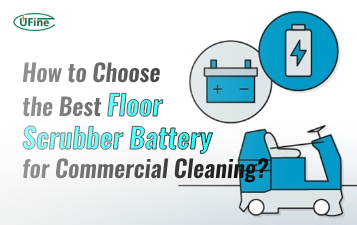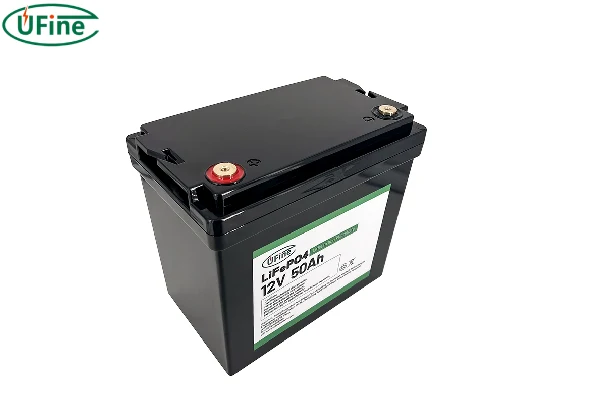Owning an All-Terrain Vehicle (ATV) is about adventure and off-road exploration. But to keep your ATV running smoothly, a reliable battery is essential. With numerous types of ATV batteries available, picking the right one can be daunting. This guide will help you understand an ATV battery, the different types available, and how to choose the best one for your needs. Additionally, we’ll offer crucial charging precautions and maintenance tips to ensure your battery lasts as long as possible.
Part 1. What is the ATV battery?

An ATV battery is specifically designed to power All-Terrain Vehicles. Unlike regular car batteries, ATV batteries are built to handle the unique demands of off-road conditions.
Here are some key characteristics of ATV batteries:
- Durable Construction: ATV batteries are engineered to withstand the constant vibrations and rough terrains encountered during off-road rides. This durability ensures they can handle the jostling and impacts without losing performance.
- Compact Size: Given the limited space in ATVs, these batteries are designed to be compact yet powerful, fitting snugly into the designated battery compartment.
- Reliable Power: They provide a steady and reliable power output, ensuring that your ATV starts easily and the electrical systems function correctly.
- Maintenance-Free Options: Many modern ATV batteries are designed to be maintenance-free, meaning you don’t have to worry about checking fluid levels or other upkeep tasks.
Understanding these characteristics is the first step in choosing the right battery for your ATV.
Part 2. ATV battery types
There are several types of ATV batteries, each with its own unique features and benefits. Here’s a closer look at the main types:
- Lead-Acid Batteries: These are the traditional type of batteries that have been around for decades. They are affordable and widely available but require regular maintenance, such as checking and topping off the electrolyte levels. They can spill if tipped over, which can be a concern in off-road conditions.
- AGM (Absorbent Glass Mat) Batteries: AGM batteries are sealed and maintenance-free. They use a fiberglass mat to absorb the electrolyte, making them spill-proof and more durable. They handle vibrations better than lead-acid batteries and are ideal for rough terrains.
- Gel Batteries: Similar to AGM batteries, gel batteries are sealed and maintenance-free. They use a gel-like substance instead of liquid electrolyte, which makes them very stable and able to operate in extreme temperatures. However, they are typically more expensive than AGM batteries.
- Lithium-Ion Batteries: These are the newest type of battery for ATVs. They are incredibly lightweight and have a long lifespan. They charge quickly and can hold a charge for a long time, even when not in use. However, they are the most expensive option and require a compatible charger.
Each type of battery has its pros and cons, and the best choice depends on your specific needs and budget.
Part 3. Which ATV battery is the best?
Determining the best ATV battery involves comparing the different types based on several factors. Here’s a detailed comparison table to help you make an informed decision:
- Lead-Acid Batteries: Best for budget-conscious buyers who don’t mind regular maintenance. They are robust but less durable and can spill.
- AGM Batteries: A great middle-ground option. They are more durable than lead-acid batteries, maintenance-free, and spill-proof. Ideal for regular off-road users.
- Gel Batteries: Suitable for extreme conditions and those who want a maintenance-free option. They are more expensive but offer stability and durability.
- Lithium-Ion Batteries: Perfect for those looking for the best performance and are willing to invest. They are lightweight, have a long lifespan, and charge quickly.
Part 4. Which battery is more suitable for me?
Choosing the right ATV battery depends on several factors, including your budget, maintenance preferences, and how you use your ATV.
Here are some guidelines to help you decide:
- Budget: If you’re on a tight budget, a lead-acid battery might be the best choice. They are affordable and widely available. However, they do require regular maintenance.
- Maintenance Preferences: If you prefer a low-maintenance option, consider AGM, gel, or lithium-ion batteries. These types are sealed and do not require regular electrolyte checks or top-offs.
- Usage Conditions: For those who ride in rough, off-road conditions, AGM and gel batteries are excellent choices. They are designed to handle vibrations and extreme conditions better than lead-acid batteries.
- Weight Considerations: If weight is a critical factor, such as in racing or performance-focused ATVs, lithium-ion batteries are the best option. They are significantly lighter than other types.
- Temperature Range: If you ride in extreme temperatures, gel batteries are particularly well-suited due to their stability in both hot and cold environments.
- Longevity: For those who use their ATV frequently and want a long-lasting battery, lithium-ion batteries offer the best lifespan, though they come at a higher cost.
By evaluating your specific needs against these factors, you can choose the ATV battery that best suits your situation.
Part 5. ATV battery precautions
Proper handling and charging of your ATV battery are crucial for safety and longevity. Here are some important precautions to keep in mind:
Follow Manufacturer Instructions: Always read and follow the instructions provided by the battery manufacturer. This includes guidelines for installation, charging, and maintenance.
- Use the Correct Charger: Ensure that you use a charger that is compatible with your battery type. Using the wrong charger can damage the battery and potentially cause safety issues.
- Avoid Overcharging: Overcharging can lead to overheating and reduce the lifespan of your battery. Use a charger with an automatic shutoff feature to prevent overcharging.
- Check Connections Regularly: Make sure the battery terminals are clean and the connections are secure. Loose or corroded connections can lead to poor performance or battery damage.
- Store Properly: If you’re not using your ATV for an extended period, disconnect the battery and store it in a cool, dry place. This helps prevent deterioration and extends the battery’s life.
- Handle with Care: Avoid dropping or subjecting the battery to severe impacts. Physical damage can affect the internal components and lead to leaks or performance issues.
By following these precautions, you can ensure the safe and effective use of your ATV battery.
Part 6. ATV battery maintenance tips
Proper maintenance can significantly extend the life of your ATV battery. Here are some essential tips to keep your battery in optimal condition:
- Regular Inspection: Periodically check your battery for any signs of damage, corrosion, or leaks. Catching issues early can prevent more serious problems down the line.
- Clean Terminals: Keep the battery terminals clean and free from corrosion. You can use a mixture of baking soda and water to clean the terminals, followed by a thorough rinse and drying.
- Charge Regularly: If you don’t use your ATV frequently, make a habit of charging the battery every few weeks. This helps maintain the battery’s charge and prevents it from discharging completely.
- Avoid Deep Discharges: Try not to let your battery discharge completely. Deep discharges can reduce the overall lifespan of the battery. Aim to recharge the battery when it drops to around 50%.
- Use a Battery Maintainer: If your ATV is in storage for an extended period, consider using a battery maintainer. This device keeps the battery at an optimal charge level without overcharging.
- Temperature Control: Store and operate your battery within the temperature range specified by the manufacturer. Extreme temperatures can negatively affect battery performance and longevity.
- Check Fluid Levels (Lead-Acid Only): For lead-acid batteries, regularly check the electrolyte levels and top off with distilled water as needed. Be sure to follow safety precautions when handling battery acid.
Implementing these maintenance tips will help ensure your ATV battery remains reliable and performs well over its lifespan.
By understanding the different types of ATV batteries, their characteristics, and how to maintain them, you can make an informed decision that best suits your needs. Whether you prioritize cost, maintenance, durability, or performance, there is an ATV battery out there that fits your requirements. Remember, taking care of your battery with proper charging and maintenance practices will not only extend its life but also ensure your ATV is always ready for your next adventure.
Related Tags:
More Articles

How to Choose the Best Floor Scrubber Battery for Commercial Cleaning?
Selecting the ideal floor scrubber battery ensures a long runtime, rapid charging, and minimal maintenance for efficient commercial cleaning operations.
Battery for Blower vs Battery for Leaf Vacuum: Which One Should You Choose?
Battery for blower vs leaf vacuum—learn the key differences in power, fit, and runtime to choose the right battery for your outdoor tool needs.
How to Choose the Right Battery for Blower?
Choosing the right blower battery? Consider voltage, capacity, chemistry & usage. This guide helps match the best battery for peak performance.
How to Choose the Best Insulated Battery Box for Lithium Batteries?
Choosing the Best Insulated Battery Box for Lithium Batteries? Discover key factors such as size, material, and safety for optimal protection and performance.
7 Critical Elements on a Lithium Battery Shipping Label
What must be on a lithium battery shipping label? Learn 7 key elements to ensure safety, legal compliance, and correct handling across all transport modes.




